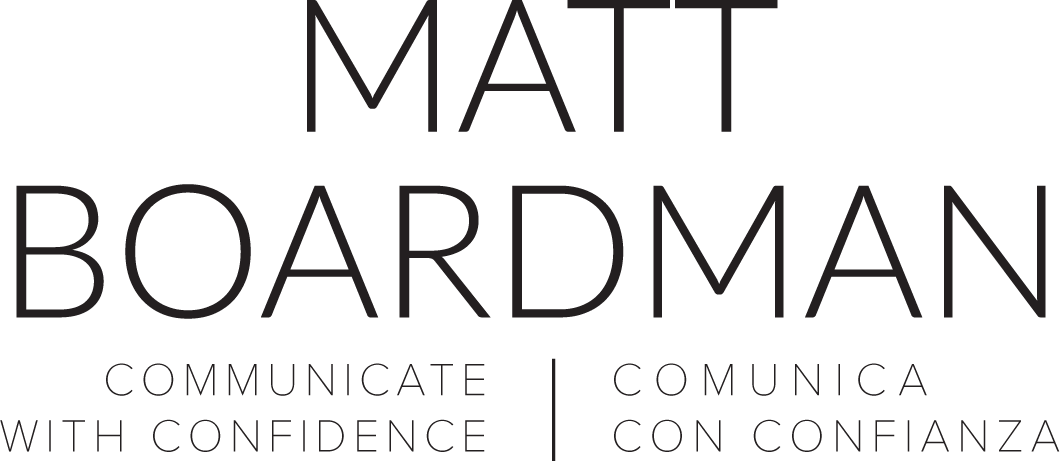If you have ever listened to a speech by someone who speaks monotonously, you will know that strong vocal delivery is vital to: 1) communicate your message clearly and 2) stop your audience going to sleep and/or wanting to hurt you physically. The quickest way to make your startup elevator pitch stand out from the rest is to practise it with a simple technique: The Blind Cat Test.
The Blind Cat Test
“How many of you have ever spoken to a cat?”
Several bewildered hands raised among the 58 late teenage social entrepreneurs of United World Colleges' brilliant Action for Change programme in Toledo.
Blind cats and vocal delivery in my workshop for United World Colleges in Toledo
“Some of you have just said that the content of your speech is the most important thing to interest your public speaking audience. But a cat can’t understand your content. Or if it does, it doesn’t care about it. Right?”
Murmured agreement.
“When you talk to a cat, the only thing that will hold its interest are the other things we’ve talked about: passionate delivery, a varied tone of voice and emphatic but purposeful movement.”
“Now what if the cat is blind?”
Murmured confusion.
“If a cat is blind, you can’t even rely on gestures and purposeful movement. Your voice is the only thing that will maintain its interest, and if your voice is even remotely monotonous your blind cat will leave. Fast.”
The Blind Cat Test is one I often do in training workshops to emphasize how crucial to the success of your elevator pitch is a varied vocal delivery. It works like this:
- You stand opposite a partner, who is your blind cat. They are blindfolded (or shut their eyes, if you have 58 participants and insufficient blindfolds).
- You tell them an anecdote. Any time they find your voice monotonous, your blind cat will take a step backwards.
- To entice your blind cat closer again, you must vary the speed, volume or tone of your voice, or inject purposeful pauses.
4 techniques to vary your vocal delivery
Here are 4 ways you can vary your vocal delivery:
Speed:
- Talking faster helps intensify moments of excitement in your pitch. But be warned that periods of fast talking should be limited and followed by a pause (see below).
- Talking slower is an excellent technique to help the audience understand important or complicated parts of your pitch. Just don’t slow down too much, unless you’re pitching to a crèche-full of babies.
Volume:
- Talking louder can emphasize a strong belief or re-capture the attention of the audience.
- Talking quieter can signal a change of topic, intensify an emotional statement, and can also re-capture the attention of the audience: a listener’s subconscious jolts them out of their daydream as they’re forced to listen more carefully.
Pitch:
Raising or lowering the intonation of your voice helps you emphasize different parts of your pitch:
- Higher pitch emphasizes one part of a statement and implies positive emotion.
- Lower pitch also emphasizes one part of a statement but implies negative emotion.
- “The ↗other reason we made it out of chewing gum is…” – emphasizes the quantity of reasons and implies happiness with those reasons.
- “The other reason we made it out of ↘chewing gum is…” – emphasizes chewing gum as opposed to bamboo or other materials, and implies frustration with the chewing gum choice.
Pause:
Putting a confident, purposeful 2-3 second pause after:
- …a powerful statement gives it more intensity.
- …a fast or complicated explanation gives the audience time to digest it.
- …a joke gives the audience time to understand it (and laugh!)
Tip: A pause will always feel longer to you than to your audience, so don’t worry – you almost definitely haven’t left it too long.
Warning: All of these techniques should be used subtly. This is my reproduction of a genuine startup pitch I’ve seen, which somewhat distracted from the message:
(Slow, barely-audible whisper): “The thing you really have to know about our service…”
(Fast, deafening shout): “IS THAT IT’S THE FIRST TIME ANYONE’S DONE THIS BEFORE!”
Conclusion: As with alcohol, vocal variation is better used in moderate doses.
Why bother?
A famous 1971 experiment is often quoted as proof that 93% of our communication is non-verbal (vocal delivery and body language) and only 7% through the actual words we say. The experiment was widely misinterpreted and, as explained in this brilliant article, the importance of the content of our elevator pitch is actually far higher.
But the fact remains that our vocal delivery is a vital addition to our speech or pitch. It’s like the lighting in a shop window: you can have the most incredible product in the world, but if it isn’t lit well it will be much harder for people to see it.
The pitch in brief
- Vocal delivery (varied volume, speed and pitch of voice, and the use of pauses) is crucial to engage your audience and emphasize the key message of your elevator pitch. But it must be used subtly.
- One great way to practice this is the Blind Cat Test: deliver your elevator pitch to a blindfolded partner.
Want more? Now that you’ve mastered your vocal delivery, read these tips on how to make your pitch even clearer with just the right amount of PowerPoint.
What do you find hardest about your startup pitch? Let me know in the comments below, on Twitter or on Facebook.




